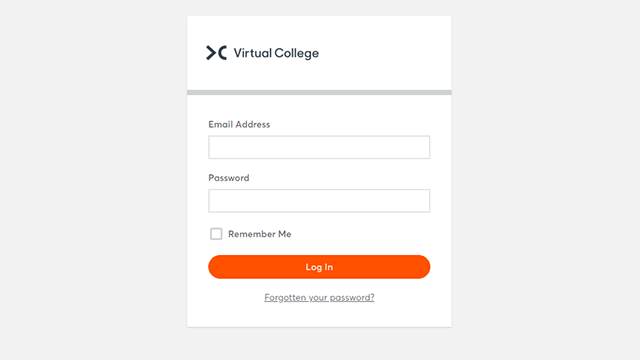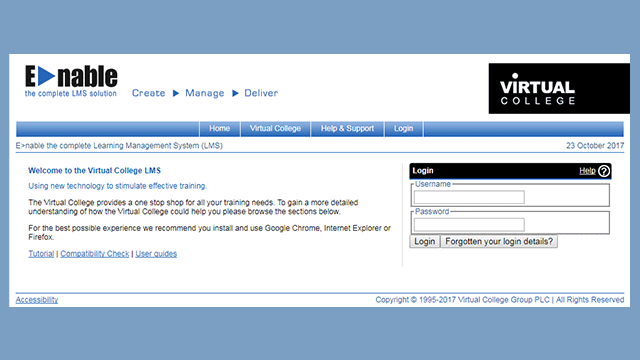First Aid for Epileptic Seizures
Please note that this information does not qualify you as an official first aider, and Virtual College advises calling 999 in the first instance at the scene of an emergency.
This material and any associated assessments do not constitute a qualification or accreditation as an official first aider. All content provided is for general information only.
Virtual College advocates dialling the emergency services before attempting any form of first aid.
Although the majority of people will go through their lives never experiencing an epileptic seizure, they can happen to anyone and are triggered by a range of different things. It can be alarming to witness someone having a seizure if you’re not prepared for it, but the steps you need to take to keep them safe are relatively simple.
First aid for seizures is something that every first aider should know, and can also be useful information for anyone to have in case they encounter someone having a seizure. In this article, we’re going to go through exactly what happens when an epileptic fit occurs, how you can recognise a seizure happening, what you should do to help the person, and when you should call an ambulance.
What Are Epileptic Seizures and What Causes Them?
Epileptic seizures and epilepsy should not be confused, though they can be related. The phrase ‘epileptic seizure’ refers to the seizure event itself, but those people with epilepsy have a condition whereby they are susceptible to seizures that begin in the brain.
A person can suffer from an epileptic seizure (also known as an epileptic fit) when they experience abnormal electrical activity in the brain. This can be a serious medical condition, and any member of the population could potentially experience an epileptic seizure at some point in their lives.
What Causes an Epileptic Seizure?
There are many potential triggers for an epileptic seizure, and it is unfortunately not always possible to be sure exactly why one has occurred. However, there are numerous described causes, and they tend to be more or less likely based on the person’s age.
Some of the major triggers include the following:
- Strokes
- Trauma
- Brain tumours
- Central nervous system (CNS) infections
- Severe dehydration
- Alcohol intoxication and other drug overdoses
- Sleep deprivation
- Complications during pregnancy
Contrary to popular belief, epileptic seizures triggered by light activity (such as strobe lighting) are very uncommon and generally account for only a very small fraction of incidents.
What Happens During a Seizure?
Epileptic seizures happen when there is excessive or abnormal behaviour in neural activity occurring in any part of the brain. These can affect normal brain function, causing everything from auditory hallucinations and visual disturbances to severe physical reactions.
Seizures can be one-off events, or commonplace symptoms of a particular condition, and can range from being minor to the point that no medical attention is required, to needing lifelong management.
What Are the Symptoms of a Seizure?
There is more than one type of seizure to be aware of. A tonic-clonic, or convulsive seizure (previously known as a grand mal seizure), is the most commonly encountered and recognised and will involve a period of muscle contractions and stiffness, followed by shaking or convulsions. There are numerous other potential symptoms however, which can include loss of consciousness, confusion, auditory and visual hallucinations and more.
It helps to be able to understand all of the potential symptoms and types of seizures to be able to recognise one occurring. Understanding what is happening to someone makes it easier to respond faster, limiting any potential harm.
What Types of Seizure Are There?
There are actually two types of seizures that can occur as a result of this abnormal brain activity. They are focal and generalised seizures, and it’s important to know the difference because they manifest themselves differently and can have different treatment paths.
Focal seizures, as their name suggests, begin in one part of the brain, which means that their effects can be varied depending on which part of the brain has been affected. They can be fairly minor events in which the person remains conscious and remembers the seizure, having experienced phenomena such as hallucinatory lights and smells.
In other instances, the person becomes confused or unconscious and may engage in strange movements known as automatisms. Focal seizures can sometimes progress to become generalised seizures.
Generalised seizures however affect the entire brain, and will usually result in a period of unconsciousness that the person does not remember. During this, there are a variety of things that can happen:
- Tonic seizures - A person suffering from this kind of seizure will experience stiffness or contractions throughout the body, and may fall over. Generally, episodes of this type will only be brief.
- Clonic seizures - Rather than stiffness, a person experiencing a clonic seizure will convulse and shake.
- Tonic-clonic seizures - A combination of both a tonic and clonic seizure, this is one of the most common types of an epileptic seizure. The person will normally experience contractions and arching of the back for up to half a minute, before shaking commences. It can take up to half an hour to fully recover from this type of seizure.
- Myoclonic seizures - These are muscle spasms that occur sporadically in places throughout the body.
- Atonic seizures - The opposite of tonic seizures, in this situation, a person’s muscles will all relax at once, which often causes them to collapse forwards. They are sometimes known as ‘drop attacks’.
- Absence seizures - Also known as ‘petit mal’ seizures, these can be fairly minor with no loss of consciousness, and generally involve disorientation, confusion, and minor muscle movements such as turning of the head.
What to Do if Someone Has a Seizure
Seizures can be one of the most visually concerning medical situations that a first aider might come across, ranging from being severe to fairly mild.
First aid for seizures generally means making the situation safe rather than directly treating the person. There are several things that you can do, and several things you shouldn’t do, in order to make the situation as safe as possible for the person experiencing the seizure.
Do
- If the person having the seizure loses consciousness or falls over, try and catch them or cushion their fall to prevent further injury.
- Do whatever you can to protect the person from injuring themselves whilst they are experiencing the seizure. This might include moving objects from around them, particularly if they are convulsing.
- Cushion their head if possible, as this will help to prevent injury.
- Take mental notes on the length of the seizure, and exactly what happened. This will be extremely useful for any medical professional and will dictate what kind of help they need.
- If you do not know the person having a seizure, check whether they have any identification on them that explains whether they usually experience seizures. If it’s someone’s first time having a seizure, emergency medical attention is needed.
Don’t
- Try to restrain the person in any way or stop them from moving if they are convulsing.
- Try to move them in any way, unless they are in serious danger of further injury.
- Give them anything to eat or drink until you are sure that they are fully recovered, as this will increase their risk of choking.
- Put your fingers or anything else inside their mouth.
- Attempt to bring them out of the seizure in any way, or encourage them to regain consciousness.
If a person is having a focal seizure, whereby they do not lose consciousness or suffer from full-body convulsions or muscle relaxation, then your primary aim is to guide them away from any danger. Try and keep them aware of what’s going on, as confusion is a very common symptom.
What to Do After a Seizure
There are some additional steps you should take once the seizure has subsided to help the person recover. They include the following:
- Place the person into the recovery position to help their breathing, as this can sometimes be made difficult by certain types of seizures.
- Stay with the person, and talk to reassure them. Preventing further stress and panic will help their breathing return to normal.
- Check the person for any injuries that they may have sustained while they were having the seizure. This can include everything from minor bruising to more severe injuries sustained as a result of falling.
When to Call an Ambulance for a Seizure
While seizures can be commonplace for certain medical conditions, there are many situations in which it is appropriate to call for emergency medical help. They include the following:
- If you believe this to be the person’s first seizure, then they should be seen by a professional to establish why it happened and how it might be prevented in future. The NHS recommends that you call 999 if it's the first time someone has had a seizure.
- If the person has sustained injuries, potentially as a result of falling, then they should be taken to accident and emergency, or an ambulance should be called if the injuries are severe.
- If convulsions continue for more than five minutes, or the person simply keeps having seizures one after another, then you should call 999 straight away, as the situation could be severe.
FAQs
What is a tonic-clonic seizure?
A tonic-clonic seizure is a medical term for what most people think of as a typical seizure. It involves a ‘tonic’ and a ‘clonic’ stage, where the person affected initially falls unconscious and goes stiff when their muscles tense, then experiences convulsions until the seizure finishes.
This type of seizure was previously known as a ‘grand mal’, which is French for ‘great illness’.
How long does a seizure last?
The duration of a seizure drastically varies between incidents, but the majority of them last between thirty seconds and two minutes. If a seizure lasts for longer than five minutes, or someone that usually has short seizures has them for a longer period of time, it’s recommended that you call an ambulance as longer seizures present a risk of brain damage.
How long does it take to recover from a seizure?
The recovery time needed after a seizure varies from person to person, and also often depends on how long the seizure lasted and whether they were injured during it. Some people will feel better after several hours, but many people find that it takes them several days to recover fully from having an epileptic seizure.
Summary
Epileptic seizures can range from short absences to extended periods of unconsciousness, potentially resulting in hospitalisation. As a first aider, the most important thing you can do in the event of a seizure is to stay calm and keep the person safe from harm, keeping track of their symptoms and understanding when professional medical help is required.
You may find our course on the Primary Survey a useful addition to the information in this article, as it covers how you and other employees in the workplace approach first aid situations, like an epileptic fit, in the proper way.




























































